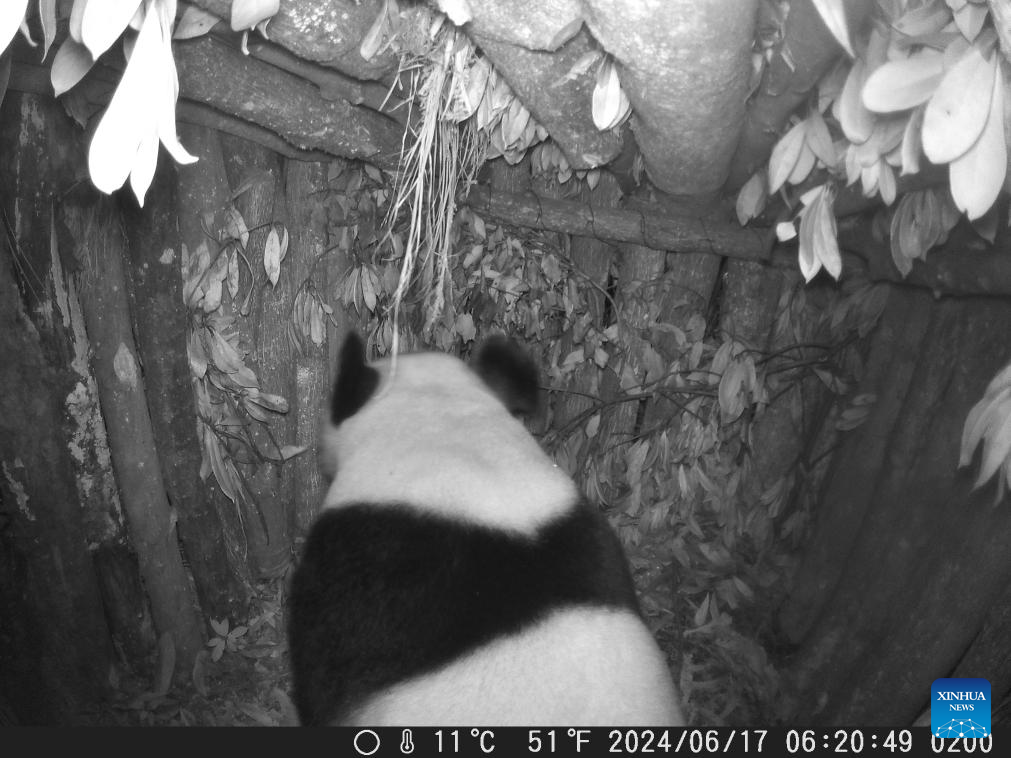Wild giant panda spotted at artificial den in southwest China
Source: Xinhua
Editor: huaxia
2024-11-15 15:30:30

An image of a wild giant panda is captured in an artificially constructed birthing den in Deyang City, southwest China's Sichuan Province, June 17, 2024. (Deyang Management Bureau of the Giant Panda National Park/Handout via Xinhua)
CHENGDU, Nov. 15 (Xinhua) -- Images of an adult wild giant panda were captured in an artificially constructed birthing den for the very first time in Deyang City, southwest China's Sichuan Province, marking a new breakthrough in the conservation of small panda populations.
"The den is located on a gentle slope of a ridge at an altitude of 1,700 meters, surrounded by lush bamboo forests with plenty of food," said Lin Lihong, deputy head of the Mianzhu management station of the Giant Panda National Park.
Experts from the Deyang Management Bureau of the park explained that while the overall situation for giant panda conservation is positive, one of the current challenges is that wild giant pandas are divided into several populations that have difficulty interacting with each other, leading to a lack of genetic exchange and the risk of degradation for some small populations.
The Jiuding Mountain small population, whose habitat is mainly located in Deyang, relies on tree holes and rock caves for breeding in the wild, which were severely damaged by the earthquake in 2008, threatening the population's reproduction. Since last year, local researchers have begun to systematically build artificial dens for wild giant pandas.
In suitable locations within the park, the local researchers have constructed dens using tree trunks, bamboo branches and moss, placed infrared monitoring cameras inside, covered them with soil to mask human scents, and dug small ponds for pandas to easily access water.
The 10 artificial dens are distributed in areas ranging from 1,700 meters to 3,000 meters above sea level, with the most treacherous ones requiring a descent via a zip line from another mountain. Collecting data from all dens requires a seven-day trek. Recent data retrieved shows that in June of this year, a wild giant panda came to "inspect" one of the dens.
"From the monitoring results, there has been no adverse reaction from the giant panda to the artificial den. Whether it will further choose this place to breed and give birth will require continuous monitoring and assessment of the panda's use of the artificial den," said Zhao Weihong, deputy director of the park's Deyang management bureau. ■



